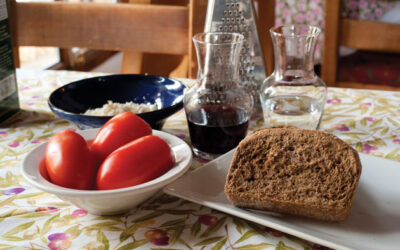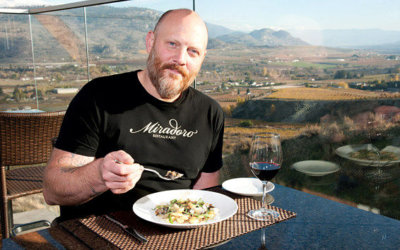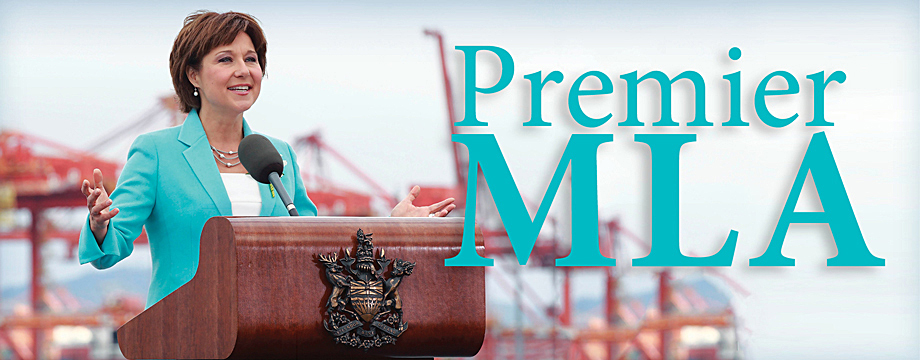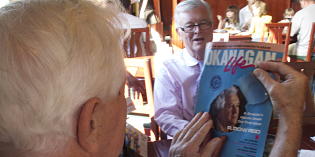As seen in
[downloads ids="146749" columns="1" excerpt="no"]The clean-cut young man doesn’t look up from his seat in the waiting room at Crossroads Treatment Centre in Kelowna. Neither does the woman I take to be his mother. A large suitcase leans on his legs. Clearly, he’s come to stay a while; probably for Crossroads’ 42-day residential addiction treatment program. A staff member approaches, clipboard in hand, mother and son embrace quickly and she hurries out the door.
I wonder what’s going through that mother’s head and heart. How does it feel to leave a loved one in addiction treatment? A few minutes later, I ask Shelley Gilmore, executive director of Crossroads, to speculate. “She may still be sitting in her car crying,” says Shelley, reflecting on other mothers she’s talked with. The tears likely cover a spectrum of emotions: fear, shame, or guilt. But there are tears of relief and hope as well. “Her son is still alive, and she’s hoping this time the treatment may stick.”
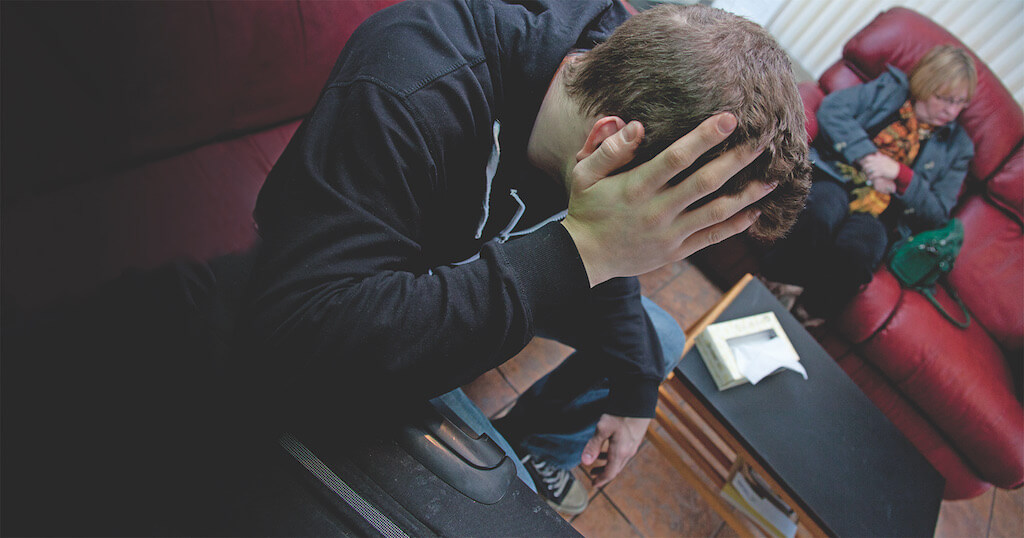
frontline suffering…
Typically, families are on the front line of suffering when a loved one gets trapped by addiction. Dale Wagner is Crossroads’ director of clinical services. He’s been working in addictions counselling for two decades, including nine years in Vancouver’s notorious Downtown Eastside.
“Addiction is a progressively isolating relationship with a substance. There are people around, but it’s less about being in relationship with them; it’s more about having a common relationship with the substance,” Dale explains, “So my (the addict’s) world becomes very narrow, and of course it’s around the substance use. I give up other healthy activities in my life, like bowling or softball—those activities no longer compete with my drinking, so I tend to spend all of my evenings at the pub.”
Dale says families are part of that, too. “Sometime, in the midst of in the midst of our addiction, we drive our family away because they’re tired of being a mark. They’re tired of excuses, tired of our unreliability, tired of lending us money that we’re not going to pay back. So they distance from us because it’s too painful to be close.”
Shelley herself has firsthand experience with that pain, and it’s one of the reasons she joined the Crossroads team. “I grew up in a family where my father was an alcoholic. Our family was so ripped apart by alcoholism,” she shares. “If I can come in here and positively affect one other family and one other dad that’s going to go back and be the person he should be for the children in his family, then I’ve done a good job.”
That’s the goal of addictions treatment—“to move a person from where they were when they came in to be able to engage in a healthy life.”
Hope is a key motivator for changing lives. Dale Wagner says that without a sense of hopefulness, it’s very difficult for people to engage in the process of change. That is true wherever the addict is on their journey.
For many, Vancouver’s Downtown Eastside is the dead end of the addiction road. It is reflected in some pockets here in the Okanagan, too. People at this stage have lost supports (families, jobs, communities), and are plunged into an environment where more abuse happens.
It is a physically threatening place, says Dale. “Women are often victimized or engaged in the sex trade, which means they’re victimized in terms of their trade but also because they’re on the street and they’re vulnerable. Drug dealing becomes rampant, housing unstable, significant mental health diagnoses or life traumas remain unresolved, so people’s compensating behaviours are quite dysfunctional.” Housing costs eat up most of whatever social assistance is available, so as Dale says, “You can steal, you can deal, or you can sell yourself to make do.”
Jackie Douglas landed in that East Hastings world at the age of 32. For 10 years, the last three on the street, she says, “I got into every kind of drug. I ended up in a coma. I ended up in hospital a lot. I got beaten up and I got robbed. There was a part of me—I didn’t want to live. Until…” She pauses at a particularly painful recollection, “I saw my daughter down there one day and called out her name. When she looked at me she ran.”
and then came Hope…
That heartbreaking moment gave Jackie the incentive to change. With the help of Insite, Vancouver’s newly opened supervised injection site, she started the long and difficult process of recovery. In the 10 years since, “I had a few falls, but I tried really hard.” Her breakthrough came when she moved to Kelowna, to the New Opportunities for Women (NOW) Canada Alexandra Gardner Safe Centre for women and children. She found a recovery home with the non-profit Karis Support Society and has been “clean” for the past four years. At the age of 52, Jackie is dealing with health issues, studying creative writing and working to get her children back in her life.
As part of her recovery, Jackie decided to share a story she wrote early in her journey to recovery of how hope turned her life around. Along with fellow Karis client, illustrator Jessie Flynn, she wove her story Hope into a charming picture book for people of all ages. It is available through the Karis Support Society.
There are two types of addiction: substance addictions (covered above) and process addictions—compulsive, consequence-ignoring behaviour around sex, pornography, gambling, video games, shopping, and even work.
hitting rock bottom…
Jackie had reached what most of us would think of as rock bottom. Are all addicts destined to hit that point before they can start to turn their lives around?
Definitely not, according to Dale Wagner. The concept of “hitting rock bottom” depends on where you put the bottom. He places one hand on the table. “If the bottom is at the table, and the person is up here,” he says, raising his other hand, “then let’s put this on the table.” He slides a book under his hand, then adds another and another.
As professional counsellors, he says, “We can help the person examine where they’re at and see if there’s motivation for them to do something different. And if we do so successfully, we’ve essentially brought their bottom up to the present conversation, because now they’re ready to engage in some change process.”
the challenge of change…
Often it’s a crisis related to the addiction that sparks the motivation for change; an accident, the loss of a job, an impaired driving charge, incarceration, marriage breakup or other significant loss.
Why is it so hard for addicts to embrace the commitment to change—and then to make changes and stick to them?
Shannon McCarthy oversees Interior Health’s community-based mental health and substance use services in the Central Okanagan. “Any behaviour change is hard,” she says, “Imagine complying to a diet; completely changing the way we eat.” Most people have tried that, with limited success.
“It’s very similar for an addict, in the sense that it (their substance use) is a coping mechanism to stress or depression or anxiety or whatever it might be. It has become part of their lifestyle,” says Shannon. As a recovering addict, “You have to mindfully, every day, make the decision that you’re going to do something different. You have to build in other coping mechanisms; you have to build in other social circles. If 30 per cent of your time every day was around trying to find the substance or buying the substance or using the substance, you have to fill the time with something else.”
more than a bad habit…
“Then there’s the neurobiology of the brain,” she continues, “There’s evidence to support that addiction actually does change the chemistry of your brain. There are those pathways in the brain that have kind of been trained. So it takes time, and it can be a relapsing condition – like any other health condition. You could do well for a while and then stress happens and there is a relapse.”
According to Shannon, mental health issues and substance use problems go hand in hand at least 50 per cent of the time.
For Hope illustrator Jessie Flynn, that connection is crystal clear. She first started using to deal with mental illness. “I’m stabilized on meds now, so I’m a normal human being. I was a normal human being then too, but I was using illegal drugs to stabilize my brain – which didn’t really work either. ‘Cuz they never do.”
Jessie adds, “Addiction is like a dark shadow. It had you sucked in for so long, it has this false personality of its own where it’s kind of helping you—like cigarettes. When I see people smoking those really yummy smelling cigarettes, I feel temptation, but then I go and I play back the tape and think about where that would put me again. It would put me in lack of money and my lungs would turn to crap and I would stink. So you have to play that tape. If you don’t, you’re screwed. You’ll just pick it up. And that’s what I’ve learnt. It’s the same with crystal meth – you’ve got to go back and picture yourself where you were.
“No bad day in recovery can compare to a life of addiction,” says Jessie. “You’re still happy, you’ve still got a roof over your head, you still have people. When you’re out there in addiction, all the people, the ‘friends,’ they’re all fake. They’re just there for your drugs or your body or whatever you have.
“Any addiction is not cool – even food addiction; it’s not cool. And you want to get away from that, so you’re grabbing for hope, you’re grabbing for comfort, you’re grabbing for support wherever you can get it and I found it in Karis and now I find it in myself.” To view Jessie’s artwork, go to www.Facebook.com/JessieFlynnPencilCrayonArt.
getting help…
In the Central Okanagan, Interior Health (IH) provides a free walk-in (no appointment required) assessment and referral service every weekday from 10 a.m. to 2 p.m. at its health centre on Ellis Street in Kelowna. Every year, about 1,500 people of all ages who are concerned about their own (or a family member’s) substance use get on-the-spot assessment and access to a variety of publicly funded services—from counselling to withdrawal management to residential treatment. In addition, IH provides prevention initiatives, as well as youth addiction workers in schools, needle exchange, pregnancy outreach, opioid replacement therapy and street based care.
Crossroads provides a six-week residential treatment program to 1,500 men and women every year; detox and withdrawal management (7 to 10 days duration) to 250 clients per year; as well as day counselling programs to several hundred individuals and families. With 59 residential spaces, 36 of them funded by the BC government, Crossroads is the largest addictions treatment facility in the Interior. But it is not the only one.
Across BC, a wide variety of services are available to people with addictions and their loved ones; professional counsellors, psychiatrists, youth residential care, aboriginal focused treatment, 12-step peer support groups in many communities, not-for-profit outreach groups, residential treatment programs and more. A search on British Columbia’s www.HealthLinkBC.ca comes up with hundreds of services and programs. And that doesn’t include many more private service providers you’ll find if you do a general online search.
Private residential treatment is not regulated by the provincial government, and IH’s Shannon McCarthy suggests that prospective clients ask very specific questions of the providers, such as: “What are they really providing; what is the service; what are the outcomes; what is their history, their reputation; do they have a physician available; do they have graduate-level counselling support; and are they following the BC Ministry of Health Adult Residential Treatment Standards (available online).”
When you just want answers, or you’re ready to seek care, Shannon recommends speaking to your family physician. He or she will guide and refer you to the services you need while keeping your total health picture in view, and be able to follow you over the long term—something vital to your recovery. Shannon also recommends the website HereToHelp.bc.ca as an excellent online resource for addicts and their loved ones.
Dale and Shannon agree a lot of addicts who seek out residential treatment don’t really need it. For many, day-program counselling while still being exposed to everyday stresses is most beneficial. Clients who access residential treatment will need follow-up counselling—usually involving family as well.
If you’re looking for professional counselling, Jim Browne of the BC Association of Clinical Counsellors advises that you look for someone who has “at least Master’s level counselling qualification, (and is) accountable within a framework of ethical and practice standard, and public protection.”
Hypnotherapy is another option for people trying to understand and change their behaviour. As a clinical hypnotherapist, Carole Fawcett of Vernon helps her clients “to achieve deep levels of relaxation. Deep relaxation allows access to the subconscious mind and can help with many issues; fears, phobias, anxiety, pain management, smoking cessation, weight loss and stress management.”
successful results?
How successful is addiction treatment? Dale Wagner measures recovery success as a process rather than a destination. “From a harm reduction
perspective, any progression toward an ideal of not being harmed by your substance use is ‘successful.’ Some people want to measure that in black and white—all or nothing. But the truth is, if I’ve gone from sharing needles to using my own; to not using needles, but smoking heroin; to not smoking heroin, but smoking marijuana; to not smoking marijuana, but still smoking cigarettes—I’ve made progressive steps to what I would define as a success. At any point in time on that journey you could say this person is successfully moving toward recovery.”
He concludes with a smile and a shrug, “Will they ever reach perfection? What if they stop smoking cigarettes, but still eat excessive doughnuts?”
What is addiction?
Look it up, and you’ll find as many definitions as sources. For this article, we draw on the version provided by Crossroads Treatment Centre:
Addiction is a maladaptive choice that one makes and has trouble managing. Addiction is the continued use of a mood altering substance or behaviour despite adverse dependency consequences.
The classic hallmarks of addiction include: impaired control over the substance/behaviour; preoccupation with the substance/behavior; continued use despite consequences; and the refusal to acknowledge or inability to see this behaviour as problematic.
Sex addiction
Julie Walkinshaw is a sex and relationship therapist based in Vernon (LoveRelationshipsCounselling.com). She says “Just like an addiction to alcohol, you can struggle with your sexual behaviour and want to change it.”
According to Julie, people who have been abused are at a higher risk. But the risk also extends to “those who have been exposed to things they shouldn’t see or hear.” That’s a real concern to her considering how easily children today can access pornography. Early exposure normalizes the behaviour to the children, but it doesn’t emerge as a problem until the child grows and finds it very difficult to connect intimately.
Julie says there’s a big difference between sex and lovemaking. If you’ve only ever had sex without intimacy or connection (you are either paying for sex or arousing yourself or it’s a parallel thing), it would be a lot of work to get into a relationship that involves intimacy and shared vulnerability where you and the other person are both happy.
Online pornography is sited as a contributing factor in much of Julie’s relationship counselling. “Spending an inordinate amount of time on the internet looking at porn or flirting or engaging in cyber sex—all of those sorts of things are walking outside of your real relationship with your spouse or partner.” She calls it cyber-fantasy and says it can really mess up your brain. “If you’re looking at images that sexually arouse you and you’re pleasing yourself at the same time, there’s a direct connection between what you are using to please yourself, your brain and what you’re seeing. It’s a loop. It’s not broken and it’s all about you.”
When you bring those choreographed, flowing and perfect images into the bedroom, Julie says, there’s trouble ahead. “Our expectations can become very skewed and we think our partner should look and act like that person and respond like that person, and it becomes a real problem especially if both aren’t watching it and staying on the same page as far as acts or positions or what-have-you.”
As a counsellor, Julie helps people understand themselves. “If our actions are problematic we have to chase it back and figure out what’s going on in our head. Why would we do that? Why would we think that? Why would we want that? And when we figure that out we can get ahead of it.”
How do you know it’s an addiction and not just a normal sexual appetite? According to Julie, the behaviour is addictive if:
• It becomes compulsive.
• It makes you feel bad. “A healthy sex life doesn’t make you feel bad. You’re not regretting the things you’ve done or didn’t do, or who you did them with.”
• You lose track of time doing the behaviour and spend too much time on it.
• You’re preoccupied with it—to the exclusion of other things—to soothe yourself.
• When you have too much, you say you’ll never overindulge again—but a pattern of use evolves.
• You experience losses because of it: legal (marriage), employment (looking at it at work), physical (hurting yourself).
Helplines
• Alcohol & Drug Info 1.800.663.1441
• Problem Gambling 1.888.795.6111
• Mental Health Info 1.800.661.2121
• BC Crisis Line 1.800.784.2433
• Kids Help Phone 1.800.668.6868
• Youth Crisis Hotline 1.800.448.4663
• BC NurseLine 1.866.215.4700
• Suicide Hotline 1.800.SUICIDE (784.2433)
• TTY Distress Line 1.866.872.0113
Read more of the original stories celebrated in our 30th-anniversary issue.
At Centre Court with the Okanagan’s Vasek Pospisil
<h3>As seen in</h3><!-- [et_pb_line_break_holder] -->[downloads ids="130450" columns="1" excerpt="no" columns="1"]<!-- [et_pb_line_break_holder] -->[downloads category="current-issue" columns="1" excerpt="no"] It was an overcast July...
Kitchen Confidential with Chef Nikos at Theos Restaurant
[downloads category="current-issue" columns="1" excerpt="no"][downloads ids="127457" columns="1" excerpt="no"][downloads ids="120272" columns="1" excerpt="no"] Nikos Theodosakis and Nikos Kazantakis share a common heritage. Both come from the Greek Island...
In Person: Simone Orlando, crafting a new role with Ballet Kelowna
<h3>As seen in..</h3><!-- [et_pb_line_break_holder] -->[downloads ids="122237" columns="1"]<!-- [et_pb_line_break_holder] -->[downloads category="current-issue" columns="1"...
Kitchen Confidential with Chef Jeff Van Geest at Miradoro Restaurant
Chef Jeff Van Geest at Miradoro at Tinhorn Creek Winery in Oliver is using local, seasonal ingredients with an Okanagan-landscape inspired approach to food.
Christy Clark: Premier MLA
[downloads category="current-issue" columns="1" excerpt="no"] Pulling off a stunning upset, Christy Clark held on to her job as BC’s 35th premier—and unexpectedly became the Valley’s newest MLA. How will she juggle...
Robert Dow Reid
Fall 1988 The plunge into the world of art paid off for Robert Dow Reid. The shipyards of Scotland where it all began may be a long way off, but for this internationally renowned sculptor, the ocean of his boyhood is ever present in the enduring and beautiful shapes...




